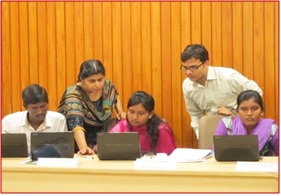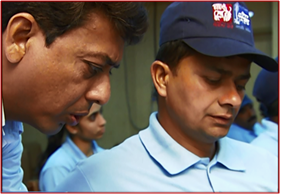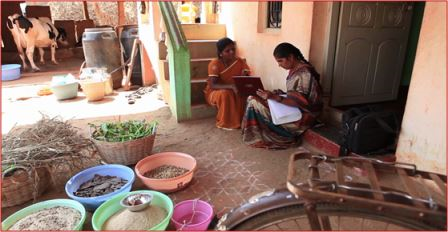
Ration Balancing Programme
It will not be possible to achieve higher productivity in a milch animal by merely increasing its genetic potential. There is evidence to show that when a milch animal is fed a balanced diet, it receives the required nutrients to produce milk commensurate with its genetic potential. Research and field trials indicates that this approach to feeding has the potential to increase milk yield, reduce cost of milk production, and contribute to reducing methane emissions. Milch animals are usually fed one or two locally available concentrate feed ingredients, grasses and crop residues. This often leads to an imbalanced ration – resulting in proteins, energy, minerals and vitamins being either in excess or deficient. Imbalanced feeding adversely impacts not only the health and productivity of animals but also affects income from milk production since an estimated 70 percent of the total cost of milk production is contributed by feed.
Therefore there is a need to educate milk producers on feeding balanced ration to their animals so that the nutrients required by their individual milch animals is fulfilled in an optimum manner, thereby improving milk production efficiency and the economic return.
NDP I plan to cover about 2.7 million milch animals in 40,000 villages using about 40,000 local resource persons (LRPs) who would be identified, trained and supervised by existing dairy cooperatives and producer companies. The project will finance the training costs, necessary equipments, and a modest monthly stipend for the LRPs on a tapering basis for about two years. Thereafter, the LRPs would be expected to earn a self-sustaining income from the commission through sale of area specific mineral mixture (ASMM) and other neutraceutical products.
|
The project aims to demonstrate a new approach to extension by underlining the importance of unique identification of animals, their performance measurement and advisory support at farmers doorstep. It is envisaged under the project that each animal covered under RBP would be uniquely identified with an ear tag so as to enable monitoring of its productivity as well as efficiency of RBP through data to be fed into a performance recording system. Proper and effective training is the key for successful countrywide implementation of ration balancing programme (RBP) envisaged under NDP I. The technical officers, animal nutritionists and trainers of end implementing agencies (EIAs) would be trained at NDDB who in turn would impart training to local resource persons (LRPs) at EIA level. Trained LRPs will provide advisory services to dairy farmers feeding balanced ration to their animals. LRPs would also educate milk producers on the latest technologies such as feeding milch animals with bypass protein, bypass fat, ASMM, treated or enriched crop residues etc. Besides, milk producers would also be educated on importance of drinking water, proper mangers for feeding the animals, significance of colostrum feeding to newly born calves, chaffing of fodder, de-worming, vaccination, timely insemination etc.
Benefits of Ration Balancing Programme
|
 |
 |
